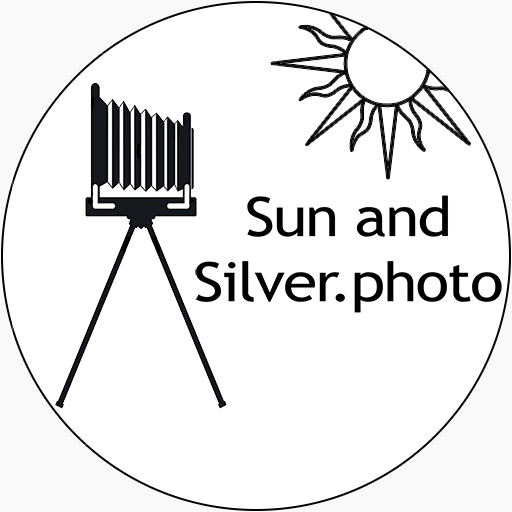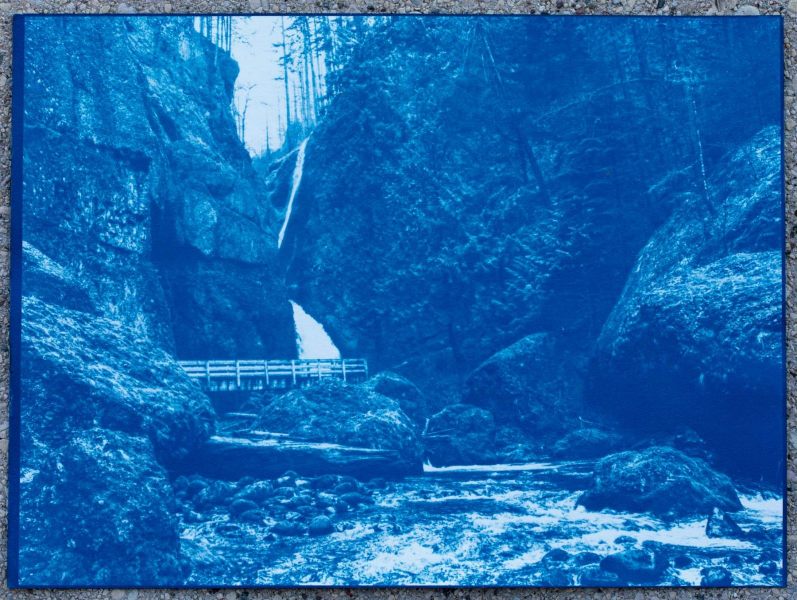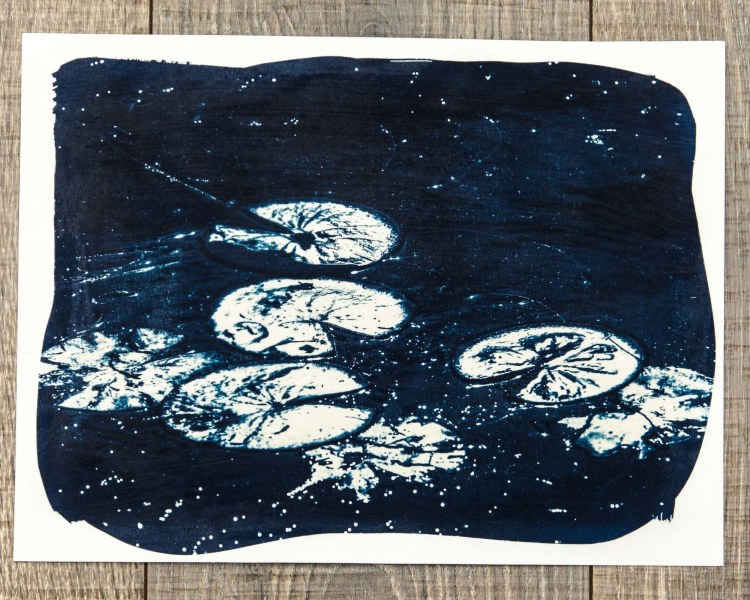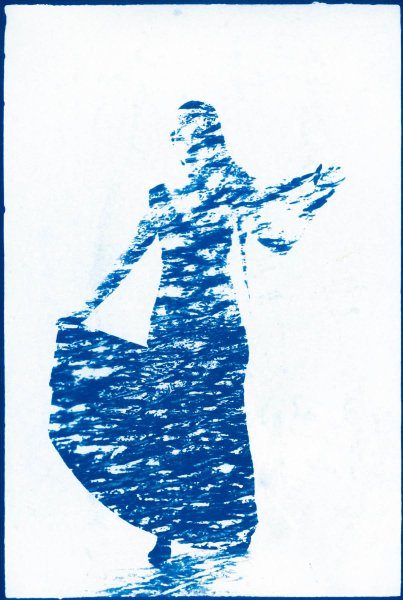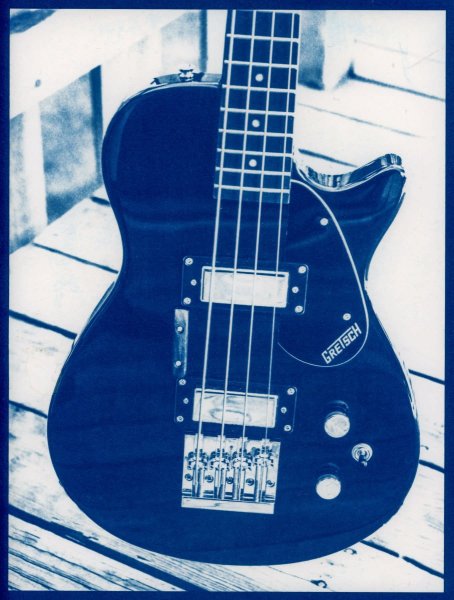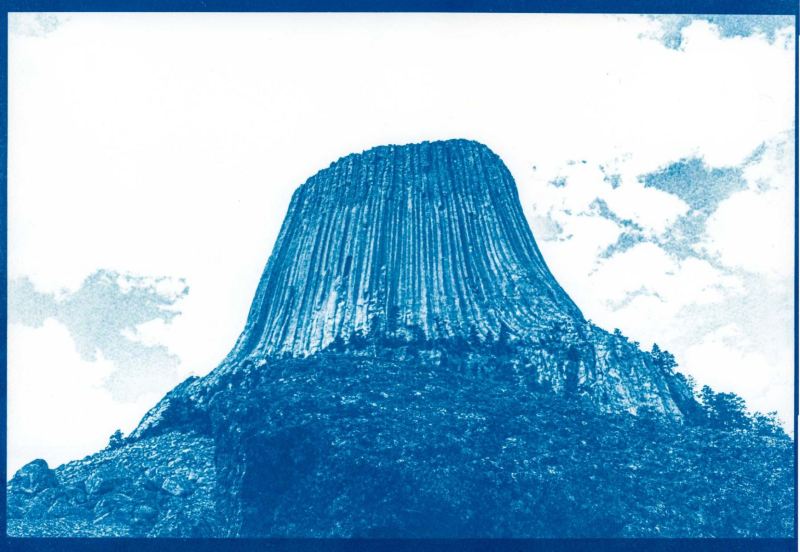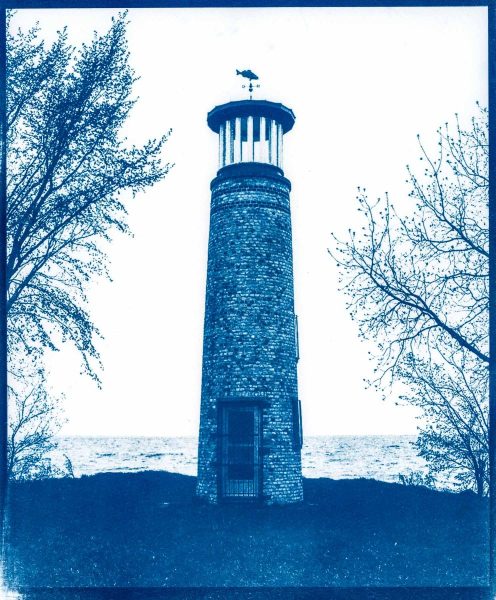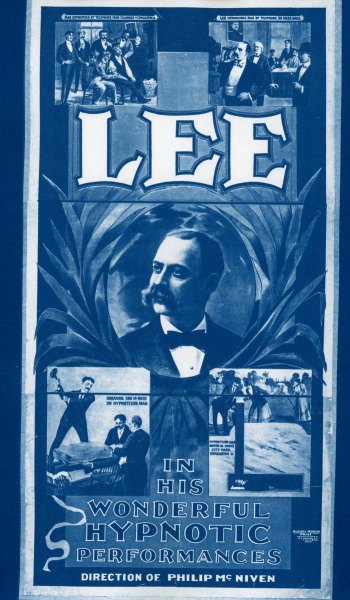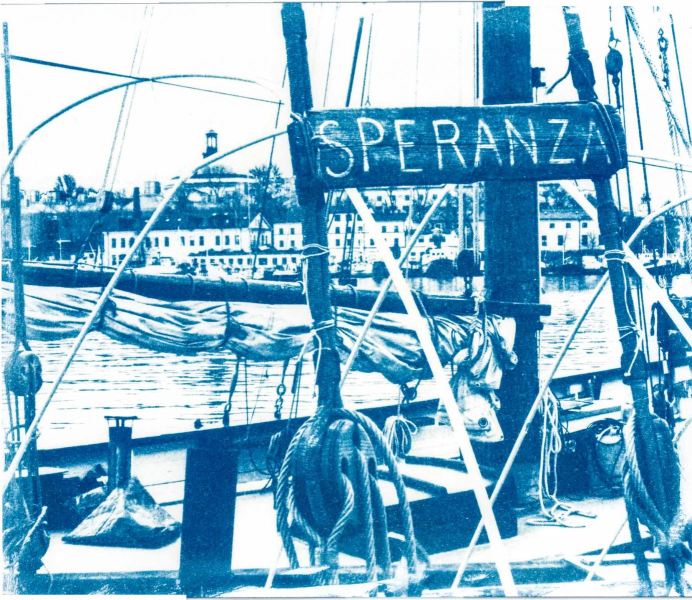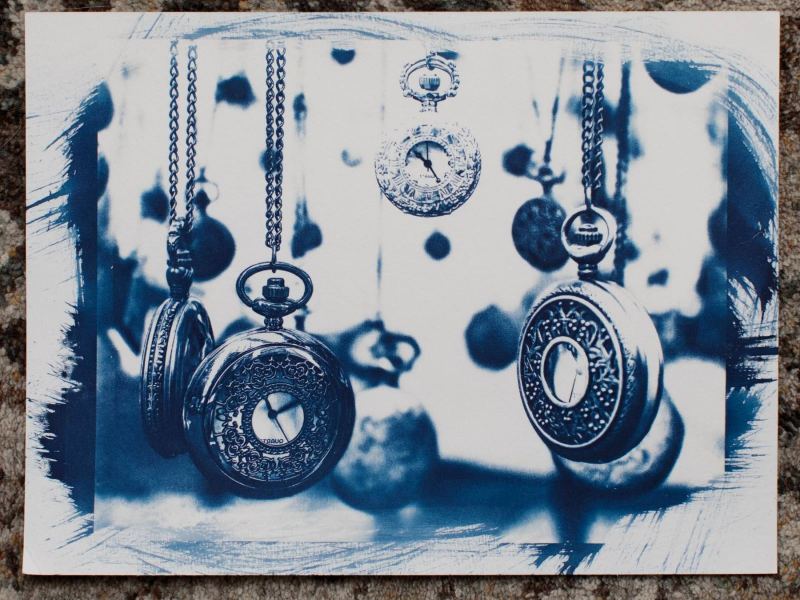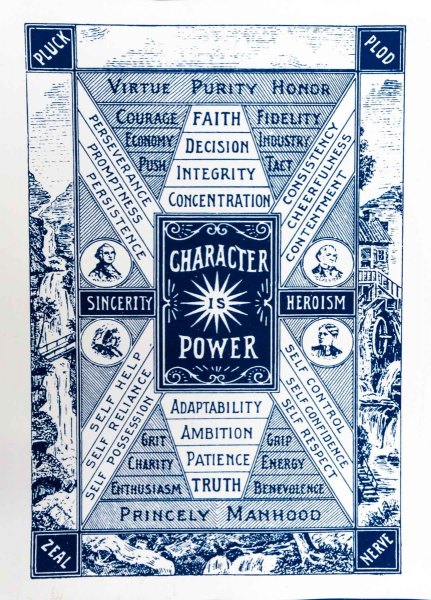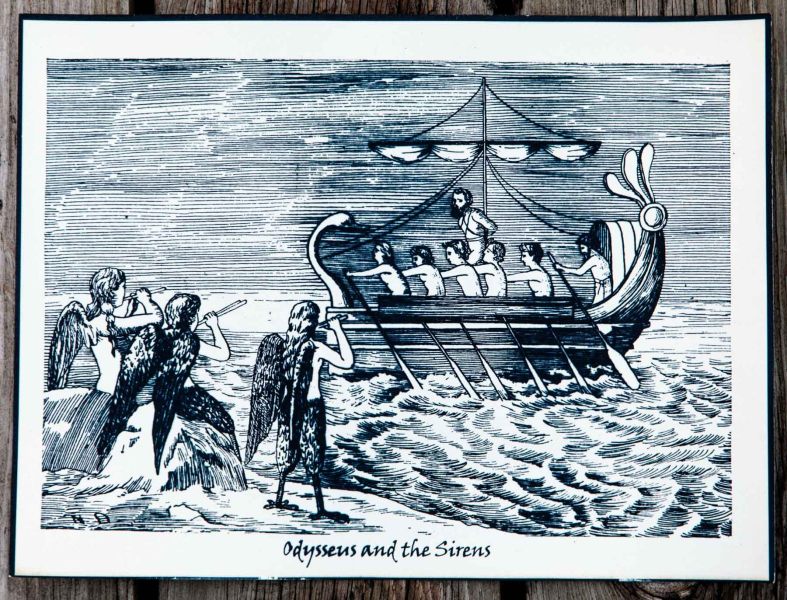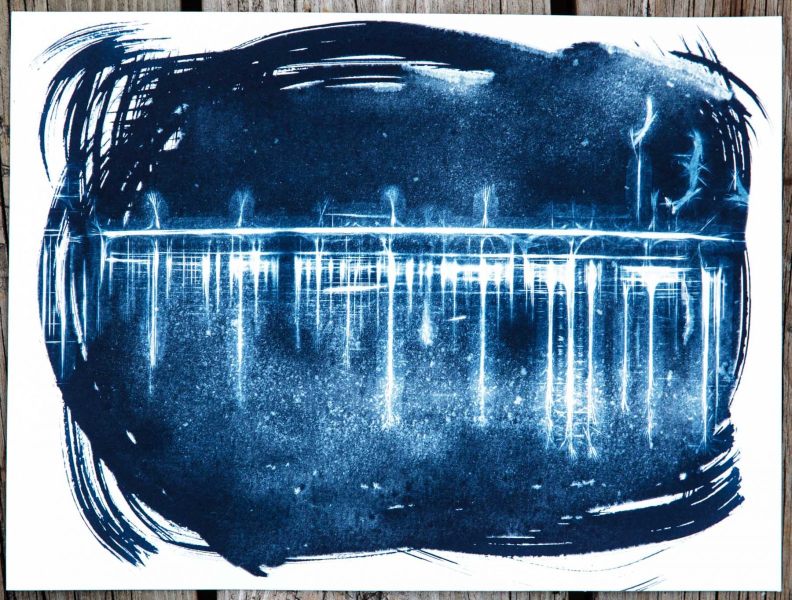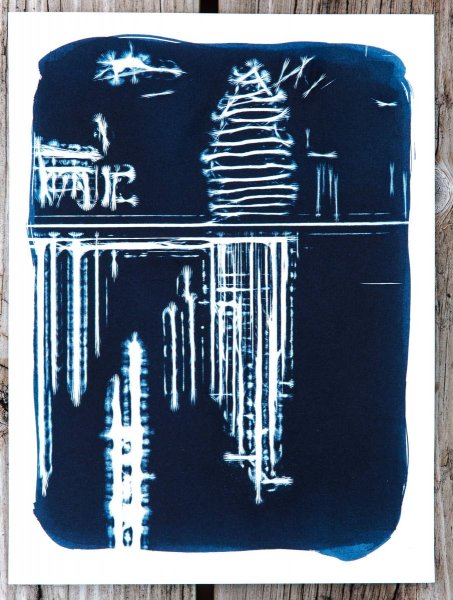Cyanotype creates beautiful images using iron salts and sunlight. It can be used to make both photographic prints and original art works. We use cyanotype mostly on paper but it can also be used on glass, plastic, stone and cloth. The process was invented by John Hershel in 1842 and was one of the first imaging processes. Herschel discovered that iron salts would be treated to become light sensitive. When exposed to sunlight, or any UV light source, the salts formed a permanent iron dye with intense blue color. Known as Prussian Blue, the color is ranges from light blue to almost black.
Cyanotypes are produced through a contact printing process where the image is formed by selectively blocking sunlight.
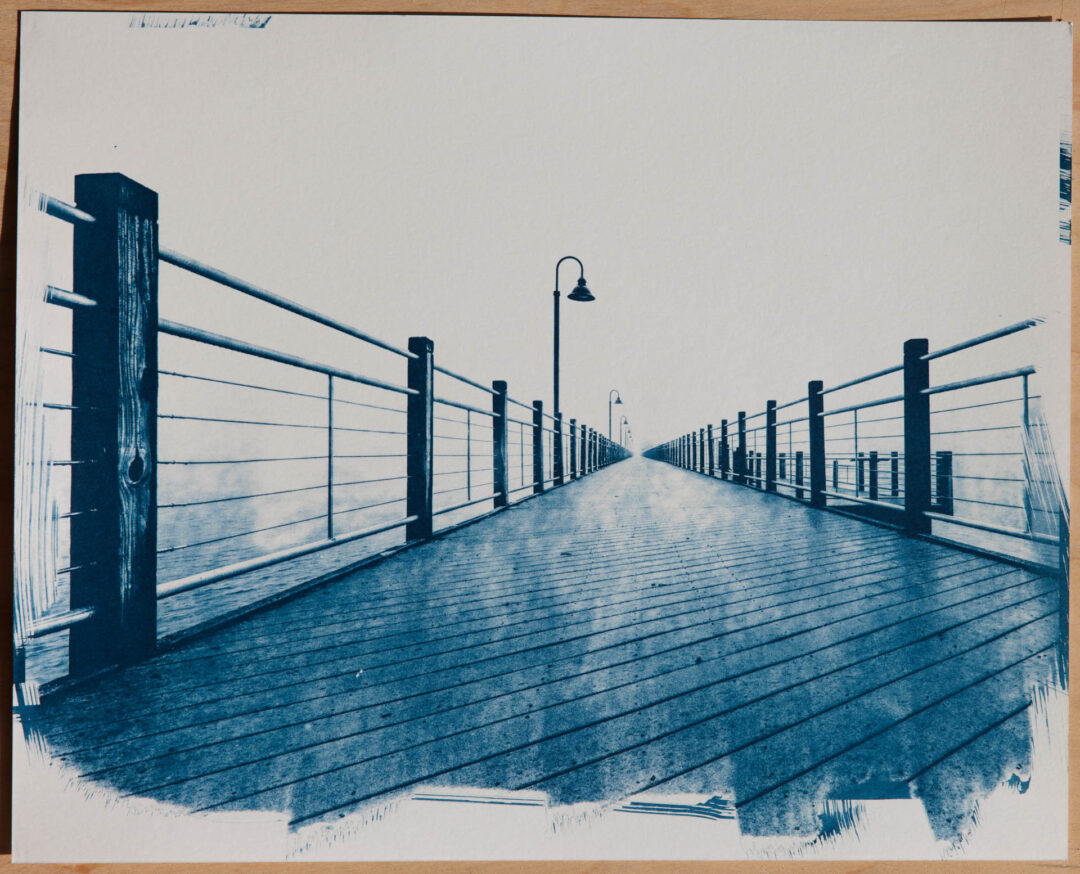
- A full sized negative is used to produce the image – the negative can anything from physical objects to photographic film
- Paper is coated with a solution of iron salts in a room with very dim light and allowed to dry
- The sensitized paper is placed in contact with the negative and clamped in a printing frame
- The frame is placed in sunlight for 10 to 60 minutes to produce an image
- The paper is washed in water (in a darkened room) to remove unreacted iron salts, leaving behind an image
- The print can also be toned with various substances (like coffee or tea) to produce different colors
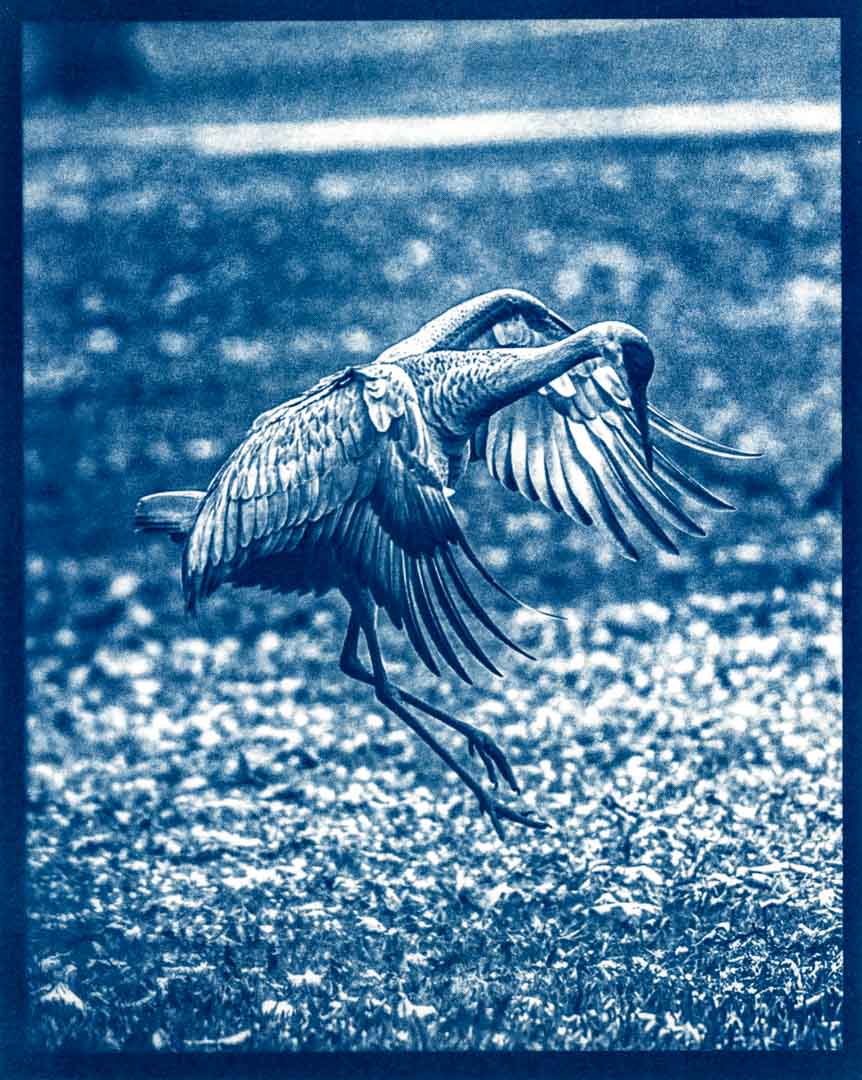
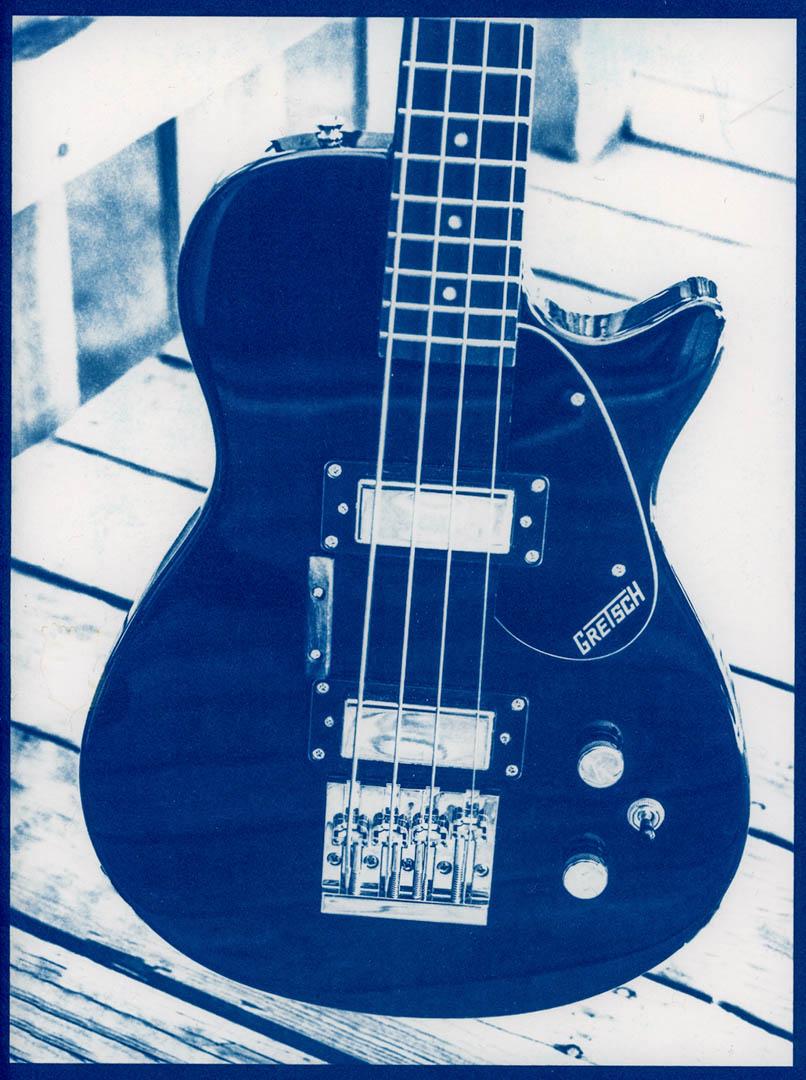
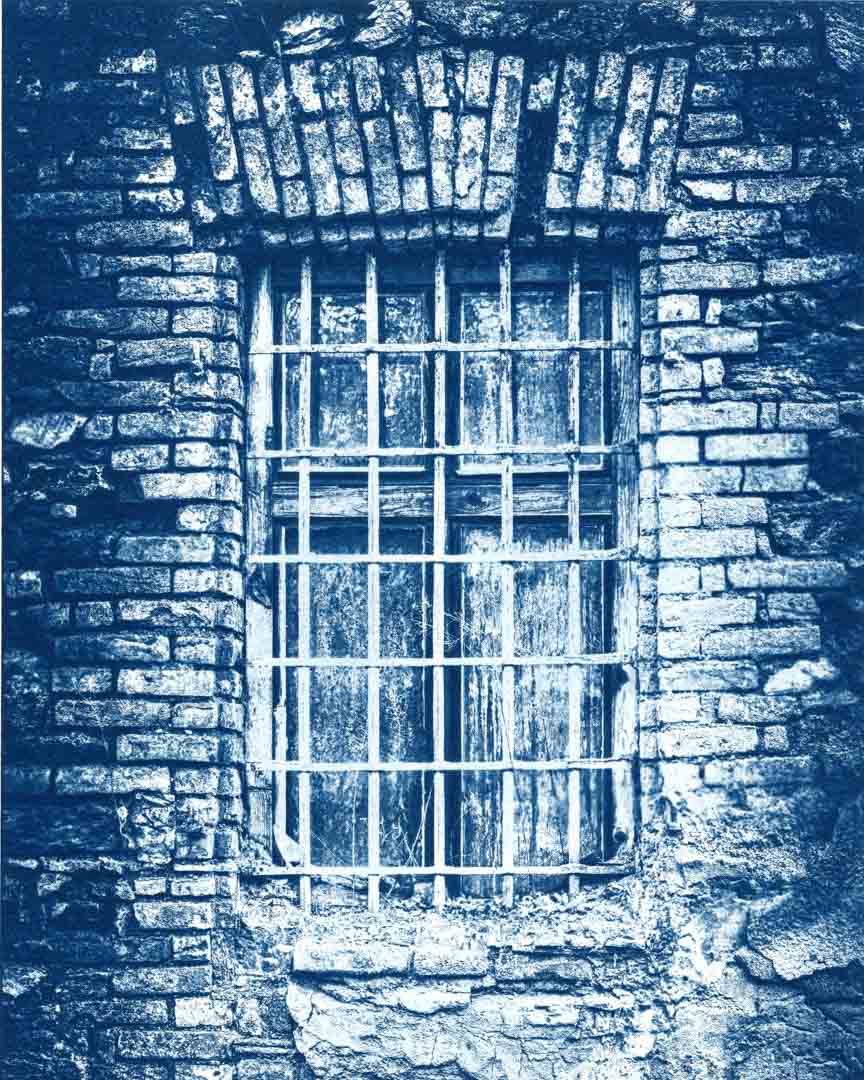
We can produce an archival quality cyanotype of your favorite picture in a variety of sizes. Contact us for more information.
We also have a limited number of original cyanotype prints for sale on our companion site Sun and Silver.art
Back to Vintage Photographic Processes
